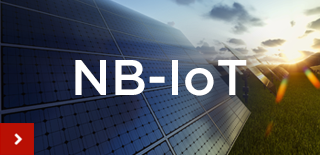Mobile IoT = Trusted IoT
Mobile IoT refers to low power wide area (LPWA) 3GPP standardised secure operator managed IoT networks in licensed spectrum. In particular, LPWA networks designed for IoT applications that are low cost, use low data rates, require long battery lives and often operate in remote and hard to reach locations. Existing cellular networks have evolved to deliver service to billions of new devices providing complete IoT connectivity.
Mobile IoT technologies are also inherently more secure than alternative solutions. This is because Mobile IoT networks use dedicated spectrum bands to avoid interference and because SIMs contain highly secure integrated circuits, but also because mobile operators are supplementing these inherent capabilities with additional security features.
The GSMA Mobile IoT Initiative is designed to accelerate the commercial availability of low power wide area solutions in licensed spectrum.
Why do we need low power wide area networks?
To support the further growth and development of the Internet of Things (IoT), the mobile industry together with 3GPP has standardised a new class of GSM technologies in record time. LPWA networks will support devices requiring, low power consumption, long range, low cost and security.
LPWA networks will play an important role in connecting up the billions of new devices making up the IoT. LPWA technologies are expected to serve a diverse range of vertical industries and support a range of applications and deployment scenarios, which existing mobile technologies may not currently be best placed to connect.
Complementary technologies using licensed spectrum
Due to the diversity of IoT application requirements, a single technology is not capable of addressing all of the LPWA use cases. For this reason the mobile industry has focused on two complementary licensed 3GPP standards: Long-Term Evolution for Machines (LTE-M) and Narrowband-Internet of Things (NB-IoT). LPWA technologies in licensed spectrum can be deployed in a simplified manner, without sacrificing key customer requirements, such as battery lifetime and security.
Why use licensed spectrum solutions?
Mobile operators already provide reliable, end-to-end secured IoT platforms that allow customers to scale and manage their business requirements. They also have unrivalled global network coverage as well as technical and business support to react to a customer’s changing needs. As trusted providers of reliable solutions, operators and their ecosystem partners are therefore best placed to extend their reach to serve the full range of IoT applications.
This means solutions deployed in licensed spectrum will:
- Support very low in power consumption – a battery life measured in years, in excess of 10 years for some applications
- Be optimised for brief messages – about the length of an SMS
- Have a very low device unit cost – the connectivity module will eventually cost a few dollars
- Have good coverage both indoors and outdoors in previously unreachable locations, often beyond power sources
- Be easy to install on to current networks, reusing existing cellular infrastructure wherever possible
- Be scalable by being able to support large numbers of devices over a wide geographic area
- Deliver end-to-end secure connectivity and support for authentication appropriate to the IoT application
- Be able to be integrated into a mobile operator’s unified IoT platform
Specifications for licensed spectrum LPWA solutions were completed in June 2016 and included in 3GPP Release 13. Commercial deployments have started in 2017 and are expected to increase significantly in the second half of the year.
Market Opportunity for Low Power Wide Area Networks
As LPWA networks are designed for IoT applications that have low data rates, require long battery lives, are low cost, and operate in remote and hard to reach locations, they will be easy to deploy across a number of different verticals such as utilities, smart cities, logistics, agriculture, manufacturing, and wearables.
LPWA is a quickly emerging area of the IoT and represents a huge market opportunity as the IoT scales. Analyst firm Machina Research anticipate there will be 3 billion LPWA connections by 2025. By 2022, already 56% of active LPWA connections will be in licensed spectrum.
Analysys Mason forecast LPWA technologies will generate US$5 billion globally in connectivity revenue by 2025. By 2022, Strategy Analytics estimate network operators could be generating more than $13 billion from LPWA connectivity, as well as significant additional revenues from value-added services, such as data analytics and security.
What is the GSMA doing?
The GSMA launched the ‘Mobile IoT Initiative’ in June 2015 to accelerate the commercial availability of LPWA solutions in licensed spectrum. Backed by 70+ of the world’s leading mobile operators, OEMs, chipset, module and infrastructure companies, this Initiative facilitates demonstrations, proofs of concept and commercial deployments Mobile IoT: 3GPP industry standard LPWA technologies in licensed spectrum.
For more information on the Mobile IoT Initiative, please contact [email protected]
Join the Mobile IoT Innovators
To help build a vibrant ecosystem around licensed spectrum LPWA technologies, the GSMA has created the Mobile IoT Innovators community consisting of developers, device makers, network vendors, operators and end customers. Sharing interviews with industry experts, case studies, use cases and other valuable information, this community helps stimulate insights and innovation. To receive monthly briefings and enjoy other exclusive benefits, join the Mobile IoT Innovators now.



